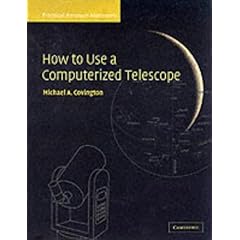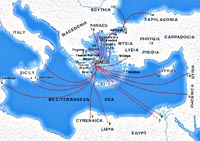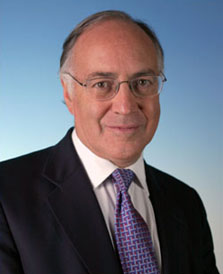 Amateur astronomy
Amateur astronomy, a subset of
astronomy, is a
hobby whose participants enjoy studying celestial objects.
The amateur astronomer is one who does not depend on the field of astronomy as a primary source of
income or support, and does not have a
professional degree or advanced academic training. Many amateurs are beginners, while others have a high degree in astronomy and often assist and work along side professional astronomers. The term "amateur astronomer" comes from the
Latin amātor, meaning '"lover", so "amateur astronomy" means "lover of astronomy".
Amateur astronomy is usually associated with viewing the
night sky when most celestial objects and events are visible, but sometimes amateur astronomers also operate during the day for events such as
sunspots and
solar eclipses. Amateur astronomers often look at the sky using nothing more than their eyes, but common tools for amateur astronomy include portable
telescopes and
binoculars.
People have studied the sky throughout history in an amateur framework, without any formal method of funding. It is only within about the past century, however, that amateur astronomy has become an activity clearly distinguished from professional astronomy, and other related activities.
Amateur astronomy objectives Amateur astronomers use a range of
instruments to study the
sky, depending on a combination of their interests and resources. Methods include simply looking at the night sky with the
naked eye, using
binoculars, using a variety of
telescopes of varying power and quality, as well as additional sophisticated equipment, such as
cameras, to study light from the sky in both the visual and non-visual parts of the
spectrum. Commercial telescopes are available and used, but in some places it is also common for amateur astronomers to build (or commission the building of) their own
custom telescope. Some people even focus on
amateur telescope making as their primary interest within the hobby of amateur astronomy.
Although specialised and experienced amateur astronomers tend to acquire more specialised and more powerful equipment, it's not unusual for relatively simple equipment to be preferred for certain tasks. Binoculars, for instance, although generally of lower power than the majority of telescopes, also tend to provide a wider
field of view, which is preferable for looking at some objects in the night sky.
Amateur astronomers also use
star charts that, depending on experience and intentions, may range from simple
planispheres through to detailed maps of very specific areas of the night sky. A range of
astronomy software is available and used by amateur astronomers, including software that generates maps of the sky, software to assist with astrophotography, and software to perform various calculations pertaining to astronomical phenomena.
Amateur astronomers often like to keep records of their observations, which may take the form of an
observing log. Observing logs typically record details about which objects were observed and when, as well as describing the details that were seen. Sketching is sometimes used within logs, and photographic records of observations have also been used in recent times.
Common tools Many methods are used in amateur astronomy to locate items in the sky, but most are variations of a few specific techniques.
Star hopping is a method often used by amateur astronomers with low-tech equipment such as binoculars or a manually driven telescope. It involves the use of maps (or memory) to locate known
landmark stars, and "hopping" between them. Because of its
simplicity, star hopping is a very common method for finding objects that are close to naked-eye stars.
More advanced methods of locating objects in the sky include
setting circles, which assist with pointing telescopes to positions in the sky that are known to contain objects of interest, and
GOTO telescopes, which are fully automated telescopes that are capable of locating objects on demand (having first been
calibrated).
Setting circles are
angular measurement scales that can be placed on the two main
rotation axes of some telescopes. Since the widespread adoption of digital setting circles, classical engraved setting circles are now specifically identified as "analog setting circles." By knowing the
coordinates of an object (usually given as
equatorial coordinates), the telescope user can use the setting circles to align the telescope in the appropriate direction before looking through its
eyepiece. Computerized setting circles are called "digital setting circles." Although digital setting circles can be used to display a telescope's
RA and
Dec coordinates, they are not simply a digital
read-out of what can be seen on the telescope's analog setting circles. As with go-to telescopes, digital setting circle computers (commercial names include Argo Navis, Sky Commander, and NGC Max) actually contain databases of tens of thousands of celestial objects and projections of planet positions. To find an object, such as globular cluster
NGC 6712, one does not need to look up the RA and Dec coordinates in a book, and then move the telescope to those numerical readings. Rather, the object is chosen from the database and arrow markers appear in the display which indicate the direction to move the telescope. The telescope is moved until the distance value reaches zero. When both the RA and Dec axes are thus "zeroed out," the object should be in the eyepiece. The user therefore does not have to go back and forth from some other database (such as a book or laptop) to match the desired object's listed coordinates to the coordinates on the telescope. However, many dscs, and also go-to systems, can work in conjunction with laptop sky programs. Computerized systems provide the further advantage of computing coordinate precession. Whereas printed sources are, by tradition, updated only every fifty years (
J1900,
J1950,
J2000, etc.) computerized sources will calculate the right ascension and declination of the "epoch of date"--literally to the day (
J2005,
J2007, etc.).
GOTO telescopes have become more popular in recent times as technology has improved and prices have been reduced. With these computer-driven telescopes, the user typically enters the name of the item of interest and the mechanics of the telescope point the telescope towards that item automatically. They have several notable advantages for amateur astronomers intent on
research. For example, GOTO telescopes tend to be faster for locating items of interest than star hopping, allowing more time for studying of the object. On the other hand, the necessary complex
electronics and mounting systems add an element of cost that could otherwise be utilized for higher quality optics.
Arguably, the increased affordability of GOTO telescopes has also resulted in a new
type of beginning amateur astronomer, because GOTO telescopes offer a form of instant gratification, sometimes allowing difficult objects to be found quickly without requiring the experience of learning to find them. About ten years ago there was some debate, usually light-hearted, within the amateur astronomy community about which method is superior. Some astronomers argued that beginning with the lower end of technology and using star hopping techniques is an excellent method of learning the sky, and that a good knowledge of the night sky can be advantageous for people who prefer simpler equipment with less calibration and setup time, and is therefore more versatile. Star hopping involves the use of printed media that is dependent on computer generated sources. The user prints out star maps at home or uses books,
atlases, and magazine articles that have computer generated graphics in them to aid in the quest to find an object.
GOTO telescopes, on the other hand, do make the hobby more accessible. They may be preferred by people who are more serious about studying objects, because less time and effort are required for finding objects when they are well prepared. But digital setting circle or go-to systems also provide touring functions whereby the user can set parameters such as
magnitude and class of object, and, for example, view a series of
planetary nebulae in
Cygnus. A user who has discovered that his list of close
double stars is impossible to view because of the seeing conditions can select an alternative viewing program within minutes. Many middle-aged and older amateur astronomers discovered that electronic pointing systems not only were convenient but spared them the difficult postures and associated aches and pains that go with pointing a telescope at
zenith (with the common straight-through finder) or near to the
horizon (on elevated mounts the finder can be out of reach). The explosion of astrophotography, in which a
webcam or
CCD camera is mounted on a telescope and downloads data to a nearby laptop, further enhanced demand for
robotic systems that would point the telescope while the operator could stay seated and set imaging parameters.
All told the market for amateur equipment has moved decisively in the direction of some form of computerized finding assistance. This includes inexpensive digital setting circles for introductory level telescopes ($300 to $1,000), where pointing assistance only is provided, to more sophisticated systems that not only aim the telescope but provide tracking. In the popular Dobson style
Newtonian reflectors object tracking is made possible by computers that can keep an object placed in the field of view by calculating the gear motions required in both the
altitude and
azimuth axes. The advantage of being able to view a planet at high power without having to keep moving the telescope manually to keep it in view has seduced many telescope owners into accepting the additional set-up time and equipment complexity required for computerized systems.
Nonetheless, the unalloyed pleasure and simplicity of a non-computerized telescope continues to have its appeal, and many observers take pleasure in surveying the heavens without electronic guidance.
Common techniques Scientific research is most often not the
main goal for many amateur astronomers, unlike professional astronomy. Work of scientific merit is possible, however, and many amateurs successfully contribute to the knowledge base of professional astronomers. Astronomy is sometimes promoted as one of the few remaining sciences for which amateurs can still contribute useful data. To recognise this, the
Astronomical Society of the Pacific annually gives
Amateur Achievement Awards for significant contributions to astronomy by amateurs.
The majority of scientific contributions by amateur astronomers are in the area of data collection. In particular, this applies where large numbers of amateur astronomers with small telescopes are more effective than the relatively small number of large telescopes that are available to professional astronomers. Several organisations, such as the Center for Backyard Astrophysics
[1], exist to help coordinate these contributions.
Amateur astronomers often contribute toward activities such as monitoring the changes in brightness of
variable stars, helping to track
asteroids, and observing
occultations to determine both the shape of asteroids and the shape of the terrain on the apparent edge of the
Moon as seen from Earth. With more advanced equipment, but still cheap in comparison to professional setups, amateur astronomers can measure the light spectrum emitted from astronomical objects, which can yield high-quality scientific data if the measurements are performed with due care. A relatively recent for amateur astronomers is searching for overlooked phenomena (e.g.
Kreutz Sungrazers) in the vast libraries of digital images and other data captured by Earth and space based observatories, much of which is available over the Internet.
In the past and present, amateur astronomers have played a major role in discovering new
comets. Recently however, funding of projects such as the
Lincoln Near-Earth Asteroid Research and
Near Earth Asteroid Tracking projects has meant that
most comets are now discovered by automated systems, long before it is possible for amateurs to see them.
Societies John Dobson perfected the
Dobsonian telescope mount that revolutionised the building of large-apature
Newtonian reflector telescopes for faint-object observing.
William D. Ferris discovered several comets and was the first to observe near-Earth objects.
Robert Fried founded the Braeside Observatory in Flagstaff, Arizona, in the 1960s.
Will Hay, the famous comedian and actor, who discovered a white spot on Saturn.
David H. Levy discovered or co-discovered 22 comets including
Comet Shoemaker-Levy 9, the most for any individual.
Leslie Peltier was a prolific discoverer of comets and well-known observer of variable stars.
Russell W. Porter founded
Stellafane and has been referred to as the "founder of
amateur telescope making."
Isaac Roberts was the first to apply photography to astronomy.
Leon Stuart photographed a Lunar flare on November 15, 1953.
Amateur
Thomas Bopp shared the discovery of comet Hale-Bopp in 1997 with unemployed PhD physicist
Alan Hale.
Sir Patrick Moore, presenter of the BBC's long-running
The Sky at Night and author of many books on astronomy.
Suraj Manjunath discovered several near-Earth comets.
Robert Owen Evans is a minister of the
Uniting Church in Australia and an amateur astronomer who holds the all-time record for visual discoveries of
supernovae.
See also The Stars: A New Way to See Them, by Hans Augusto Rey,
ISBN 0-395-08121-1 NightWatch: An Equinox Guide to Viewing the Universe, by
Terence Dickinson,
ISBN 0-920656-89-7 The Backyard Astronomer's Guide, by Terence Dickinson and Alan Dyer,
ISBN 0-921820-11-9 Turn Left at Orion, by
Guy Consolmagno,
ISBN 0-521-34090-X Skywatching, by David H. Levy and John O'Byrne,
ISBN 0-7835-4751-X Seeing in the Dark: How Backyard Stargazers Are Probing Deep Space and Guarding Earth from Interplanetary Peril, by
Timothy Ferris,
ISBN 0-684-86579-3 The Complete Manual Of Amateur Astronomy, by P. Clay Sherrod
Burnham's Celestial Handbook: An Observer's Guide to the Universe Beyond the Solar System (3 vols.), by
Robert Burnham, Jr., (Vol 1)
ISBN 0-486-23567-X, (Vol 2)
ISBN 0-486-23568-8, (Vol 3)
ISBN 0-486-23673-0
 Invited Talks & Debates
Invited Talks & Debates Cultural setting
Cultural setting Rankings
Rankings
 The song "You Can't Stop the Beat" from the Broadway musical
The song "You Can't Stop the Beat" from the Broadway musical 




 Tramway
Tramway History
History Gameplay
Gameplay See also
See also The Jiu (
The Jiu (
 First attempt to bid Leadership
First attempt to bid Leadership Resignation
Resignation Lefthit
Lefthit